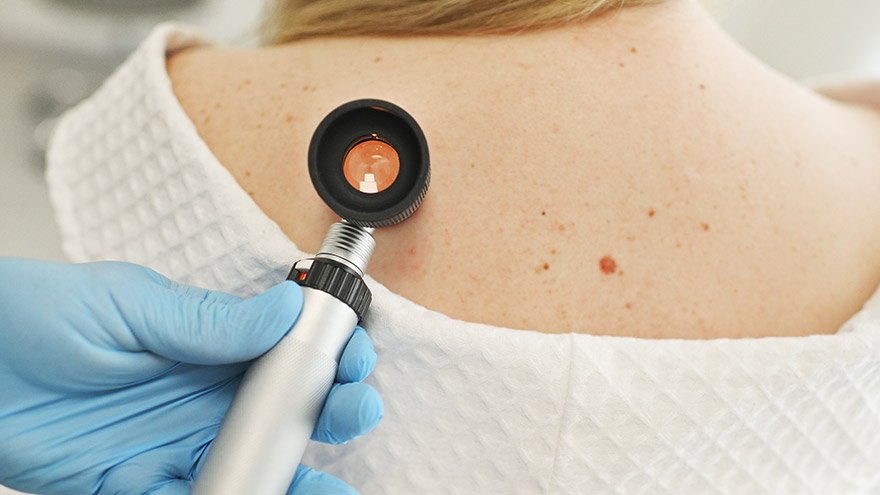
Preventing Skin Cancer – A Doctor’s Tips

Want to protect yourself from skin damage from the sun’s harmful rays? Dr. Angela Walker, dermatologist with Renown Medical Group, shares what you can do to prevent skin cancer.
What can people do to prevent skin cancer while enjoying the outdoors?
There are several steps you can take to protect your skin from the sun. “I caution all of my patients to avoid the sun during the hours of 10 a.m. until 2 p.m. when UV rays are strongest. I also encourage people to wear sleeves on cooler days. And don’t forget that we still need to wear sunscreen on cloudy days! UV rays can still cause sun damage on cloudy days. Preventing skin cancer also entails wearing sunscreen of at least SPF 30 everyday.
Are hats also a good idea for skin protection?
Yes, of course! Choose a wide-brim hat that shades the face as well as the back of the neck for extra protection against UV rays.
When it comes to identifying skin cancer, what should people watch for?
We use easy-to-remember letters when checking for spots on the skin; it’s called the ABCDEs:
- A - Asymmetry: One half of the mole or lesion doesn't match the other half.
- B - Border irregularity: The edges of the mole are irregular, blurred, or notched.
- C - Color variation: The mole has different shades of color or uneven color distribution.
- D - Diameter: The diameter of the mole is larger than the size of a pencil eraser (about 6 millimeters) or is increasing in size.
- E - Evolution: Any changes in the mole over time, such as size, shape, color, itching, bleeding, or crusting.
These guidelines can help in identifying potentially suspicious skin lesions, but it's important to consult a dermatologist for proper evaluation and diagnosis. Early detection is crucial for successful treatment of skin cancer.
Skin Cancer Screening

How often should people go to a dermatologist for a full-body skin check?
People with a family history of melanoma or who have already had skin cancer need to be screened at least once a year. Those who are younger and use sunscreen daily don’t need to be seen as regularly. Their primary care provider can do a yearly screening. And remember to do self-screening at home to keep an eye out for unusual looking spots.
Is it best to visit a care provider with an expertise in skin with questions or concerns?
Absolutely. As a dermatologist, I see a lot of people coming in with a changing mole or brown spot that looks irregular. I can assure them it’s benign or get them the treatment they need. We can even use photography to monitor skin spots and have the patient take photos at home. We also perform biopsies as needed.
Related Blogs


5 Pro Tips for Winter Skin Care
